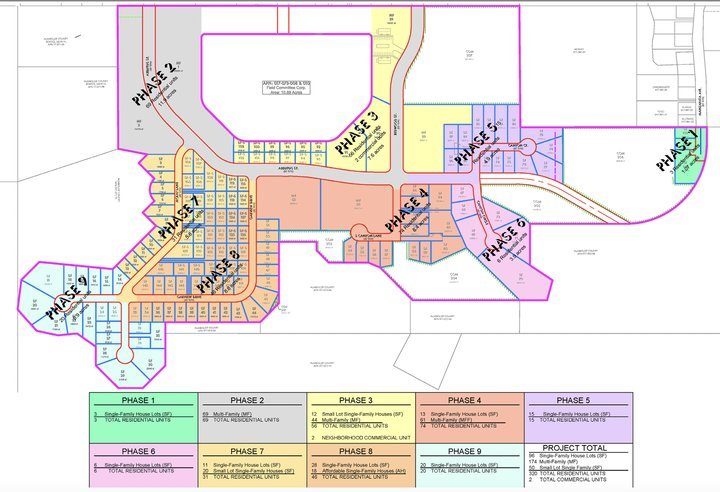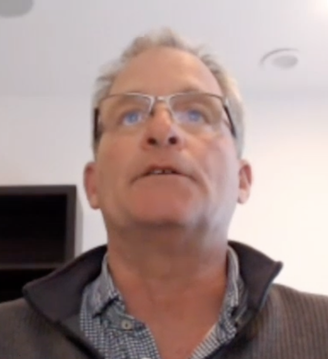Plans for the North McKay Ranch Subdivision include up to 320 residential units, including up to 172 multi-family units, along with 22,000 square feet of commercial development on a total of about 81 acres.
###
PREVIOUSLY
- MCKAY RANCH SUBDIVISION: Big Community Meeting in Cutten Tonight to Discuss Proposed 320-Unit Development Around Redwood Fields
- McKAY RANCH SUBDIVISION: Environmental Groups Voice Concerns About 81-Acre, 320-Unit Development Planned in Cutten
- McKAY RANCH SUBDIVISION: County Recirculating Environmental Document for 320-Unit Development Planned in Cutten
- McKAY RANCH SUBDIVISION: Board of Supes Set to Decide Fate of Proposed 320-Unit Development in Cutten
###
The county’s acute need for more housing was up against the looming threat of catastrophic climate change this week as the Humboldt County Board of Supervisors considered the fate of a major residential and commercial development near Cutten.
At the end of Tuesday’s very, very long meeting (it wrapped up nearly 12 hours after it began), the board unanimously approved the North McKay Ranch subdivision, an 81-acre mixed-use project from local developer Kurt Kramer. The subdivision is slated to add up to 320 residential units and 22,000 square feet of commercial space in Cutten and, in approving it, the board also approved a general plan amendment and zone reclassification that will allow the development to proceed.
The unanimous approval came despite Kramer’s steadfast refusal to make any modifications that could have made the development more environmentally friendly, including the elimination of natural gas hookups, an increased number of bicycle storage lockers and the addition of charging infrastructure for electric vehicles (EVs).
Kramer laid down his ultimatum early in the hearing, telling the board that because the project is already on the verge of being financially infeasible, the county needed to approve it as proposed or else he was prepared to walk away.
“This project has to make commercial sense or it’s not gonna get developed — and we need housing!” he told the board via Zoom. “So at the end of the day, what I would hope for is that we put this to a vote, and it’s up or down,” he continued, noting that he’s already spent $700,000 on studies and reports. If the board won’t approve the development as is, he said, the North McKay Ranch plans will just go on a shelf somewhere “and we’ll move on — and I’m good with it.”
The project’s environmental impact report (EIR) found that the development will have a couple of significant and unavoidable environmental impacts: namely, increased greenhouse gas emissions and exacerbated wildfire risks.
In order to approve the project despite those impacts, the board needed to find that the costs are outweighed by other considerations — in this case, meeting the county’s rapidly expanding housing needs (and thereby complying with state housing laws), stimulating economic growth and expanding open spaces and recreational opportunities for the surrounding community.
The housing element in the county’s general plan calls for the development of 1,413 new housing units between 2019 and 2027 across all income categories, and First District Supervisor Rex Bohn noted that growth expectations have only increased lately with the development of Cal Poly Humboldt along with other projects, such as the Nordic Aquafarms fish farm on the peninsula and the high-speed, transpacific fiber optic line landing near Samoa.
Kramer’s project — which is expected to be built in nine phases over a period of 15 to 20 years, depending on market conditions — includes 172 multi-family units, which will presumably be available for cheaper than the individual units.
Eight of the nine speakers who stuck around for the public comment period urged the supervisors to either deny the project or require modifications to lessen its footprint.
Dan Chandler said the developer and the county planning department “rejected many proposals and alternatives that would have reduced greenhouse gas emissions.”
Colin Fiske, director of the Coalition for Responsible Transportation Priorities, said the developer’s contention that this project qualifies as “infill” is “frankly absurd.” He called for more mitigation measures such as increased housing density, completion of local bicycle and pedestrian networks, inclusion of traffic-calming features and free bus passes for residents.
Tom Wheeler, the executive director of the Environmental Protection Information Center, said he’s not opposed to the project but would like to see the county require all-electric construction with no new natural gas hookups while improving the project’s EV-charging infrastructure.
Bohn, who lives in the neighborhood, made it clear that he supported the project. He talked up the location’s walkability to local stores and a post office and downplayed the fire risk, noting that the nearby groves of coastal redwoods aren’t nearly as combustible as, say, fir forests in more wildfire-prone regions such as Paradise.
Third District Supervisor Mike Wilson, on the other hand, made repeated attempts to get his board colleagues to join him in requiring modifications, including full electrification and underground conduits to make all parking spaces EV-ready.
Existing plans call for the addition of two traffic signals at nearby intersections. Wilson said he’d rather see the money spent on improving pedestrian and bicycle connectivity to neighborhood commercial areas, saying that change wouldn’t cost Kramer any more money. He also said there should be a bike locker for every upstairs unit so residents don’t need to haul their cycles up a flight of stairs.
Board Chair and Fourth District Supervisor Virginia Bass asked for Kramer’s take on these suggestions. The developer said Wilson was “adding more ornaments to a Christmas tree we can’t afford to buy already.”
Wilson struggled to get support for the stand he was trying to take. At one point, Fifth District Supervisor Steve Madrone seconded an amending motion that would have required the elimination of natural gas hookups.
Wilson turned to Bass to see if she’d join them to form a majority. “I just have to ask you, Virginia,” he said, swiveling to face her, “is anything on this list something that you’re willing to go [with]? Because as far as I can tell I’ve got a two and a half and two and a half here.”
Bass prevaricated for a couple moments before saying, “We heard pretty clearly when [Kramer] said, ‘Either say yes or say no.’ … So I really, really think that’s where Kurt is.” She said that maybe some of the things Wilson was suggesting will be state-mandated by the time Kramer’s ready to build.
Wilson kept trying, asking the board to consider his idea to swap traffic signals for better pedestrian and bike access. Second District Supervisor Michelle Bushnell was skeptical, asking who’d be legally liable if a fatal accident happened at one of those intersections.
Wilson also pushed for the board to require Kramer to sign an indemnification agreement limiting the county’s liability for the development. Such agreements have become common practice with the county, but Planning and Building Director John Ford said he’d discussed that possibility with Kramer, who said “no” to the idea. Bushnell said she didn’t feel good about putting that requirement on the project.
After some discussion, Bohn made a motion to approve the development agreement and its associated general plan/zoning changes, along with a rather squishy amendment: The board added a condition that will allow the developer to make improvements to pedestrian and bicycle connectivity, rather than installing the two traffic lights, but only if both county staff and Kramer himself agree that it’s a good idea.
That condition will come back before the board for consideration and public input at a future meeting. But the project itself was approved by a 5-0 vote.
###
Interactive map of the project site (outlined in red):


CLICK TO MANAGE